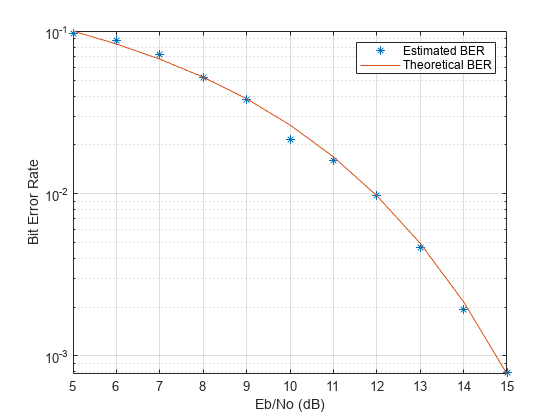biterr
Compute number of bit errors and bit error rate (BER)
Syntax
Description
[
compares the unsigned binary representation of elements in number,ratio] = biterr(x,y)x to those
in y. The function returns number, the number of
bits that differ in the comparison, and ratio, the ratio of
number to the total number of bits. The function determines the order
in which it compares x and y based on their sizes.
For more information, see the Algorithms section.
[
returns the binary comparison result of number,ratio,individual] = biterr(___)x and y as
matrix individual. You can specify any of the input argument
combination from the previous syntaxes.

